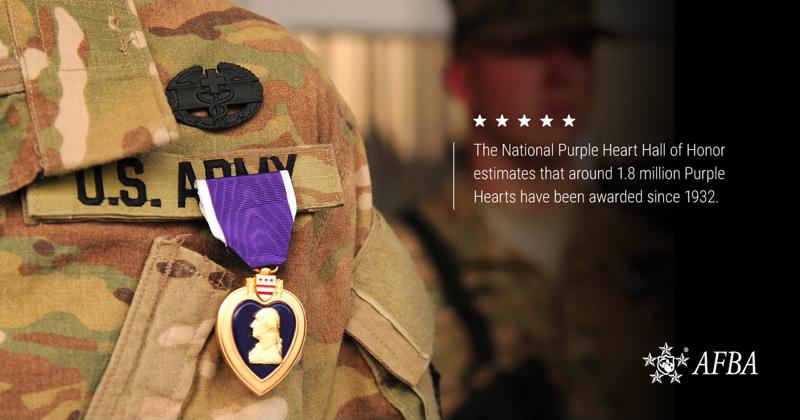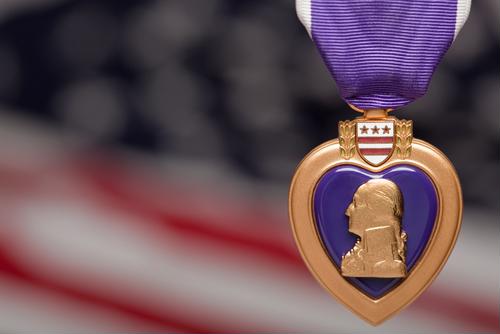The Purple Heart is among America’s most honored and recognizable distinctions. Awarded to members of the Armed Forces who have been killed or injured in battle, the Purple Heart is given in gratitude for the sacrifice and courage displayed by those who have earned it.
The medal has a long history, rooted in the Revolutionary War, and is notable for many reasons, such as the fact it can be awarded multiple times. Changes in criteria have also occurred, but the stunning and evocative visual imagery of the medal has always been a constant.
Aug. 7 is Purple Heart Day, and 2019 will mark the 237th anniversary of the medal’s birth. In observance of that fact and in respect for those who have earned the medal, let’s explore the history of the Purple Heart and the courageous examples set by our armed forces members.
 “The appearance of U.S. Department of Defense (DoD) visual information does not imply or constitute DoD endorsement.”
“The appearance of U.S. Department of Defense (DoD) visual information does not imply or constitute DoD endorsement.”Created by Washington, revived by MacArthur
The Purple Heart is America’s oldest military award, despite falling into disuse for more than a century. In 1782, the Continental Congress had halted promotions and commissions due to lack of funds, leading General George Washington to create the Badge of Military Merit as a alternative to recognize merit displayed by soldiers.
“The General ever desirous to cherish virtuous ambition in his soldiers, as well as to foster and encourage every species of Military merit, directs that whenever any singularly meritorious action is performed, the author of it shall be permitted to wear on his facings over the left breast, the figure of a heart in purple cloth, or silk, edged with narrow lace or binding,” Washington wrote in the order that established the medal and described its physical construction. A privilege of receiving this medal was enlisted men being able to pass sentries as if they were commissioned officers.
However, the Badge of Military Merit was only awarded to three participants of the Revolutionary War. It went unused until 1932, when then Army Chief of Staff General Douglas MacArthur announced the reviving of the medal in honor of Washington’s 200th birthday. MacArthur worked with the Washington Commission of Fine Arts and Elizabeth Will, a heraldry specialist in the Army’s Office of the Quartermaster General to style the medal along the lines of Washington’s description.
Reforms to eligibility
Until 1942, the Purple Heart had been a distinction exclusive to the Army. It was not until then that President Franklin D. Roosevelt authorized Navy service personnel, which included Marines and Coast Guard, to receive the award. That included members who “are wounded in action against an enemy of the United States, or as a result of an act of such enemy, provided such would necessitate treatment by a medical officer,” according to the Department of Veterans Affairs.
But that wouldn’t be the end to reforms that broadened eligibility for the Purple Heart. President John F. Kennedy in 1962 amended standards to include “any civilian national of the United States, who while serving under competent authority in any capacity with an armed force…, has been, or may hereafter be, wounded” and the posthumous awarding of the medal. The medal would later become specific to the Armed Forces.
1.8 million awarded
While there is no official record, the National Purple Heart Hall of Honor says current estimates are that around 1.8 million Purple Hearts have been awarded since the 1932 resumption. Most recently, in 2015, the eligibility criteria were expanded to include those who were killed or wounded as part of certain instances of domestic terrorism.
Aug. 7 is a date to remember the many ways in which American Armed Forces members consistently prove to be heroes in combat or protection of their fellow man. This year, take time to recognize the 234th anniversary of the Purple Heart and the accomplishments of hose who have earned it.


